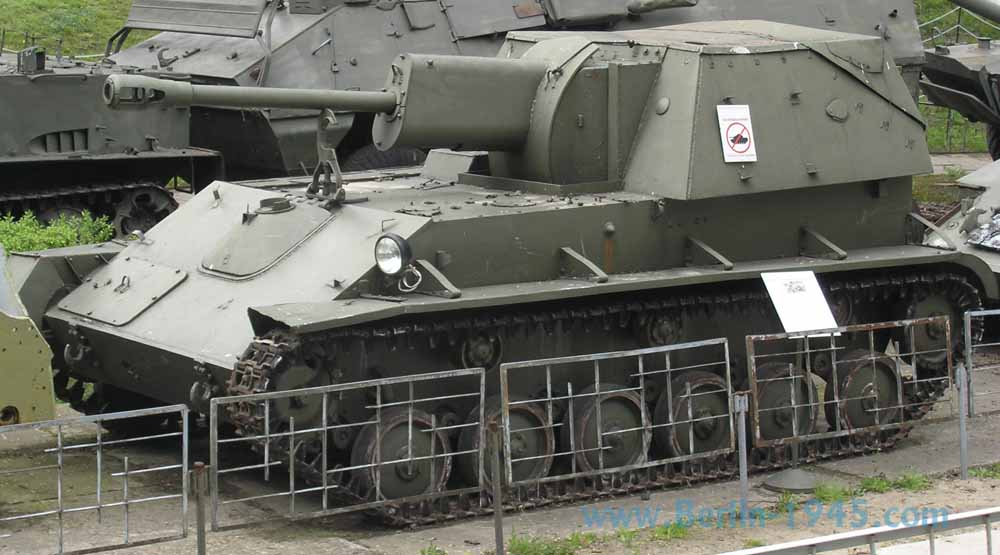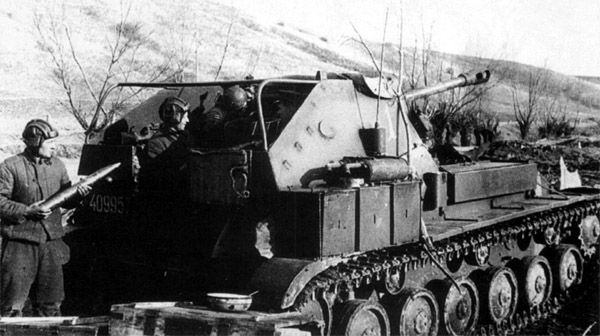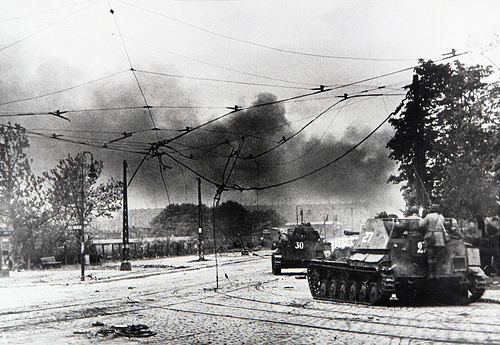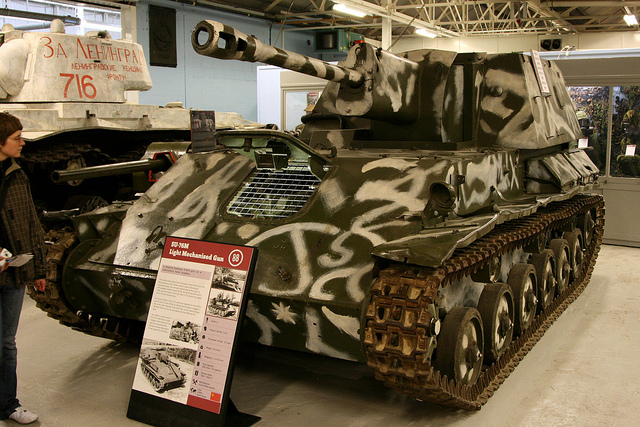The development of the SU-76 started in 1942, after the State Defense Committee of the Soviet Union requested that both the Zis-3 Field Gun and the M-30 122mm Howitzer should be placed onto a drivable chassis. For the Zis-3, the chassis of the T-70 was chosen. For the purpose of carrying the Field Gun the chassis was lengthened, one pair of track-wheels was added, and the vehicle was completely surrounded by armor. At first the designer-crew experimented with the chassis of the T-60, but the vehicle (coded as “OSU-76”) didn’t meet the requirements.
This version was called “SU-76” and faced mass production in mid-1942. After 320 built units, the production stopped to improve the vehicle design. During combat, the first variant suffered from problems with the two parallel-mounted GAZ-202 automobile engines. It was intended that each engine should operate one of the tracks. For the driver, it was too difficult to control both engines simultaneously and, on top of that, the arrangement of the engines caused heavy vibrations, which often destroyed or damaged the suspension and transmission units of the vehicle.
A early produced SU-76 with the closed compartment.
During the period of design-improvement, the Soviet tank factories bridged the halt of the production by mounting the Zis-3 onto captured German tank chassis of the Panzer III and the StuG III. This transitional solution was called “SU76i”.
Two chief designers at the GAZ plant, N. A. Astrov and A. A. Lipgart, decided to give the SU-76 the same engine-arrangement as featured in the T-70. In case of the T-70, the engines were arranged in tandem on the right hand side of the vehicle. The designers also decided to remove the “roof-armor” above the gun-compartment in order to improve access to and servicing of the weapon. This version of the vehicle was called “SU-76M” and faced mass-production in early 1943. The SU-76i was removed from the frontline and replaced with the improved vehicle.
The SU-76M in firing position for providing indirect fire
On the battlefield, the SU76 combined the role of a mobile artillery gun, an assault gun, and a light tank hunter. It was able to fire from a distance of up to 17km because of its high gun elevation, which was the highest out of Soviet equipment in use at this time. Due to its small chassis, it was a very efficient assault gun in urban combat and was well-liked by the Soviet infantrymen. The open compartment made it easy to communicate between the crew and the infantry it supported.
The Zis-3 gun made the vehicle efficient against most of the German medium tanks like the Panzer III or IV and the StuG. Its low silhouette made it perfect for ambushes and silent attacking or flanking. But against the heavier German Tanks like the Tiger or the Panther, the gun became more and more insufficient. Although it could penetrate the Panther’s side armor, it was very vulnerable and could be easily taken out, even by gunfire and grenades because of the open compartment.
In the Soviet Army, the SU-76 was highly liked by both crews and infantrymen because of its simplicity, reliability, and ease of use. “Suka” ("bitch") or “Suchka” ("little bitch") were the common used nicknames while some of the crews called their vehicle “Golozhopiy Ferdinand” ("bare-arsed Ferdinand"), because of its slight similarity in its appearance to the German heavy tank-destroyer.
Two SU-76Ms during close quarters combat in their use as an assault gun
After the end of World War II, most of the produced SU-76s were put to rest, but the communist forces used some SU-76s during the Korean War in the 1950s. Some were captured by the South Korean forces or the American forces; one of them is exhibited at the Bovington Tank Museum in England.
The SU-76M that was captured by the American forces in Korea and which is exhibited at the Bovington Tank Museum
Due to the fact, that there were 13,932 units produced, many of them survived the war and are now exhibited at various war museums and at many German-Soviet war memorials.
I really hope you liked this episode as much as the first. Be sure to vote what YOU want to see in the next episode of "The Theatre of History".


















 cblanco ★
cblanco ★  보드카 중대
보드카 중대  VonManteuffel
VonManteuffel  Heartless Jäger
Heartless Jäger 